NCERT Solutions for Class 10 Civics Chapter 3 – Gender, Religion and Caste
NCERT Solutions for Class 10 Civics Chapter 3 – Gender, Religion and Caste are essential for understanding the impact of social divisions on democratic politics in the CBSE curriculum. These well-structured answers help students grasp topics like gender discrimination, secularism, caste inequality, and how democracy addresses these issues. Designed as per the latest syllabus, these solutions strengthen conceptual clarity and improve exam preparation. Ideal for revision and practice, they foster equality, tolerance, and civic responsibility, making them a valuable study tool for scoring well in Class 10 Social Science exams.
NCERT Solutions For Class 10 Civics – Gender, Religion and Caste – Exercise Images
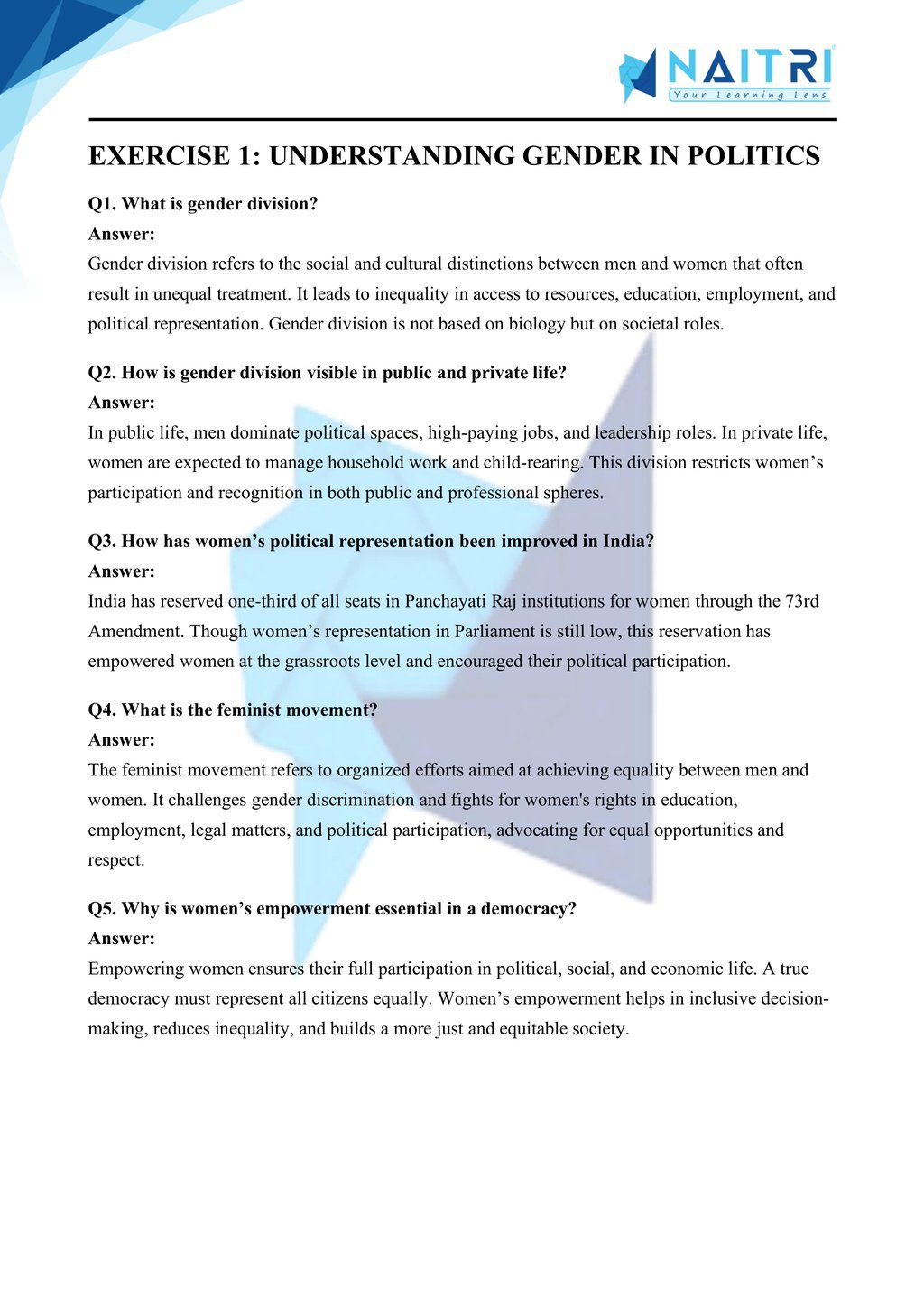
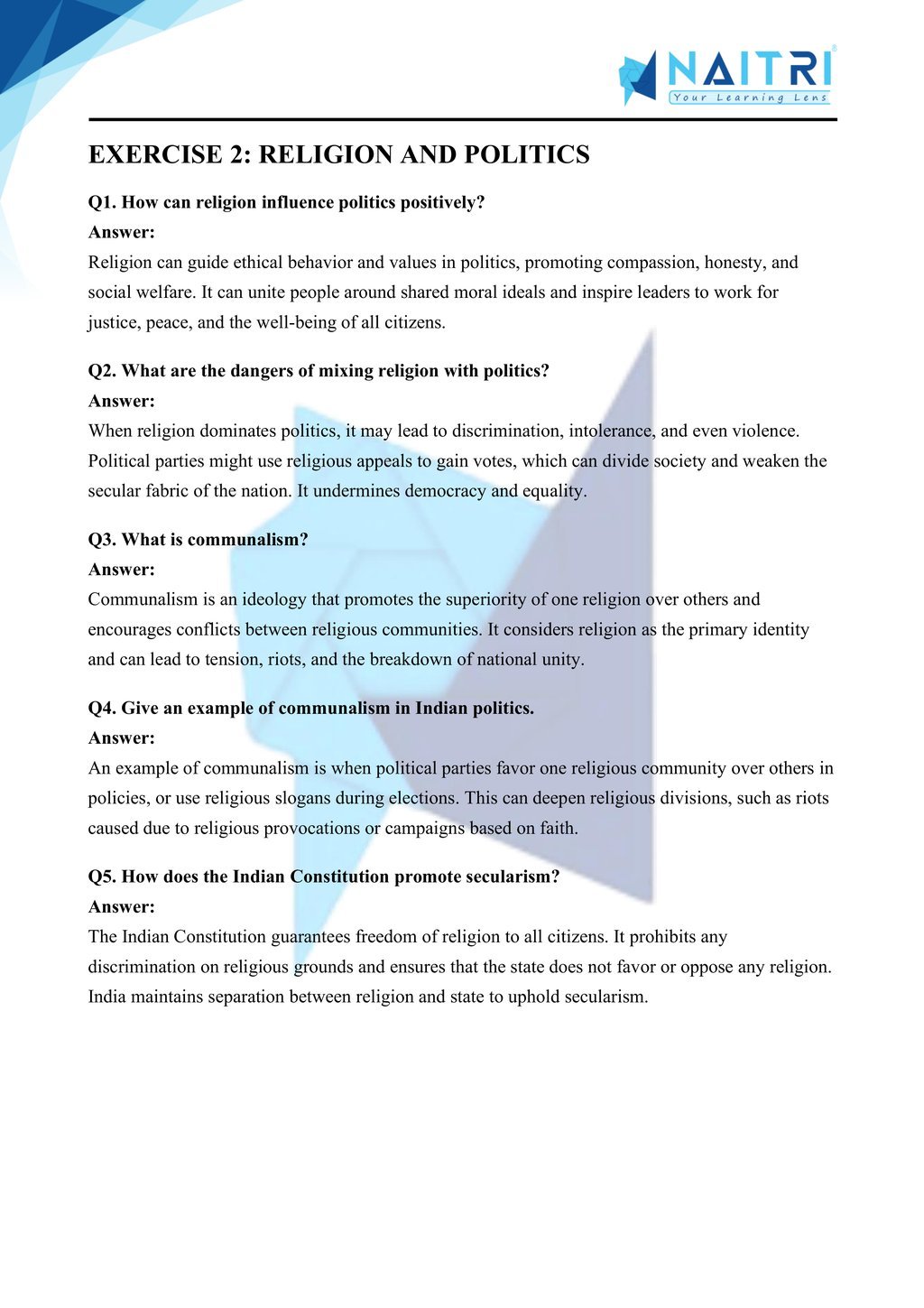
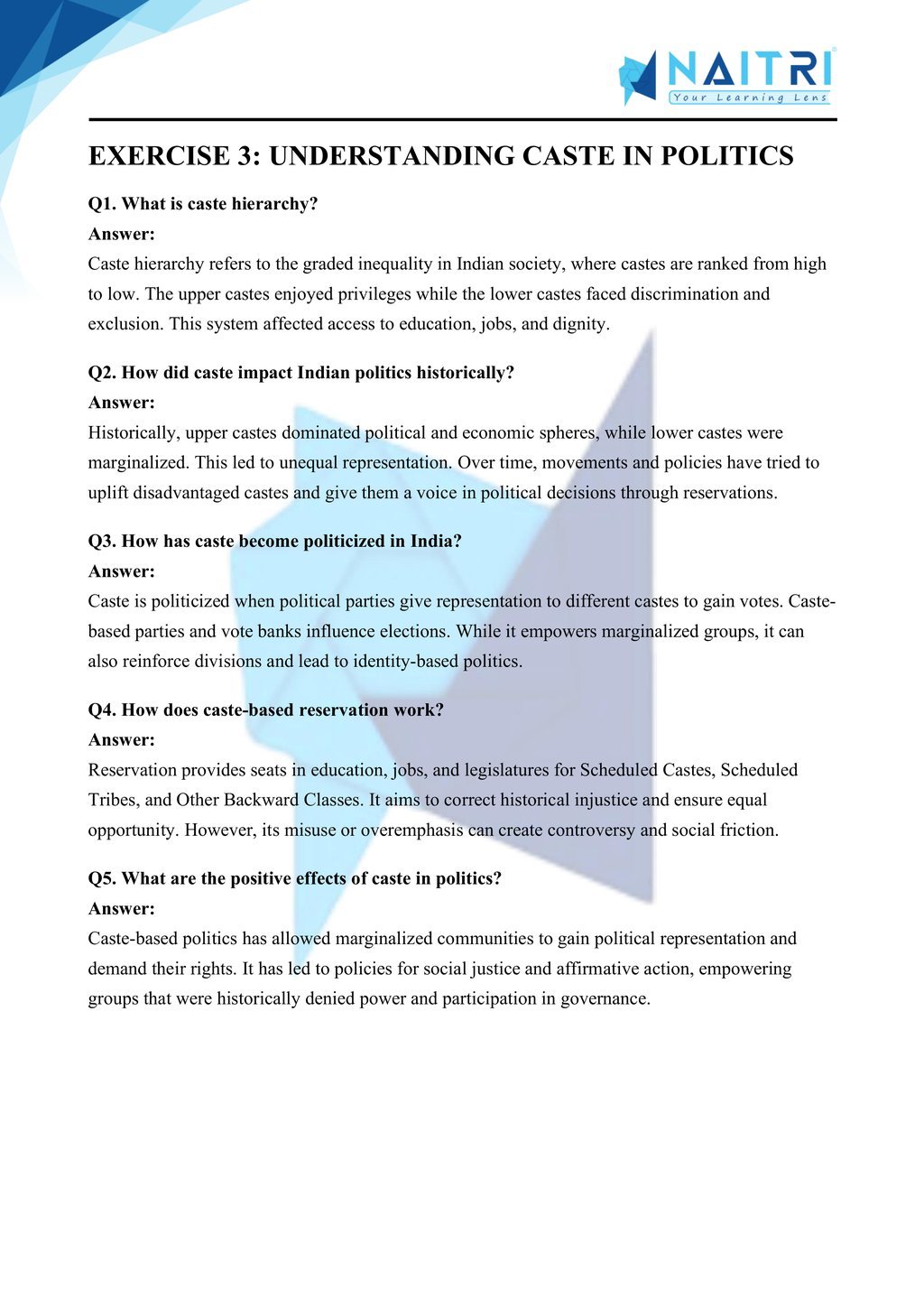
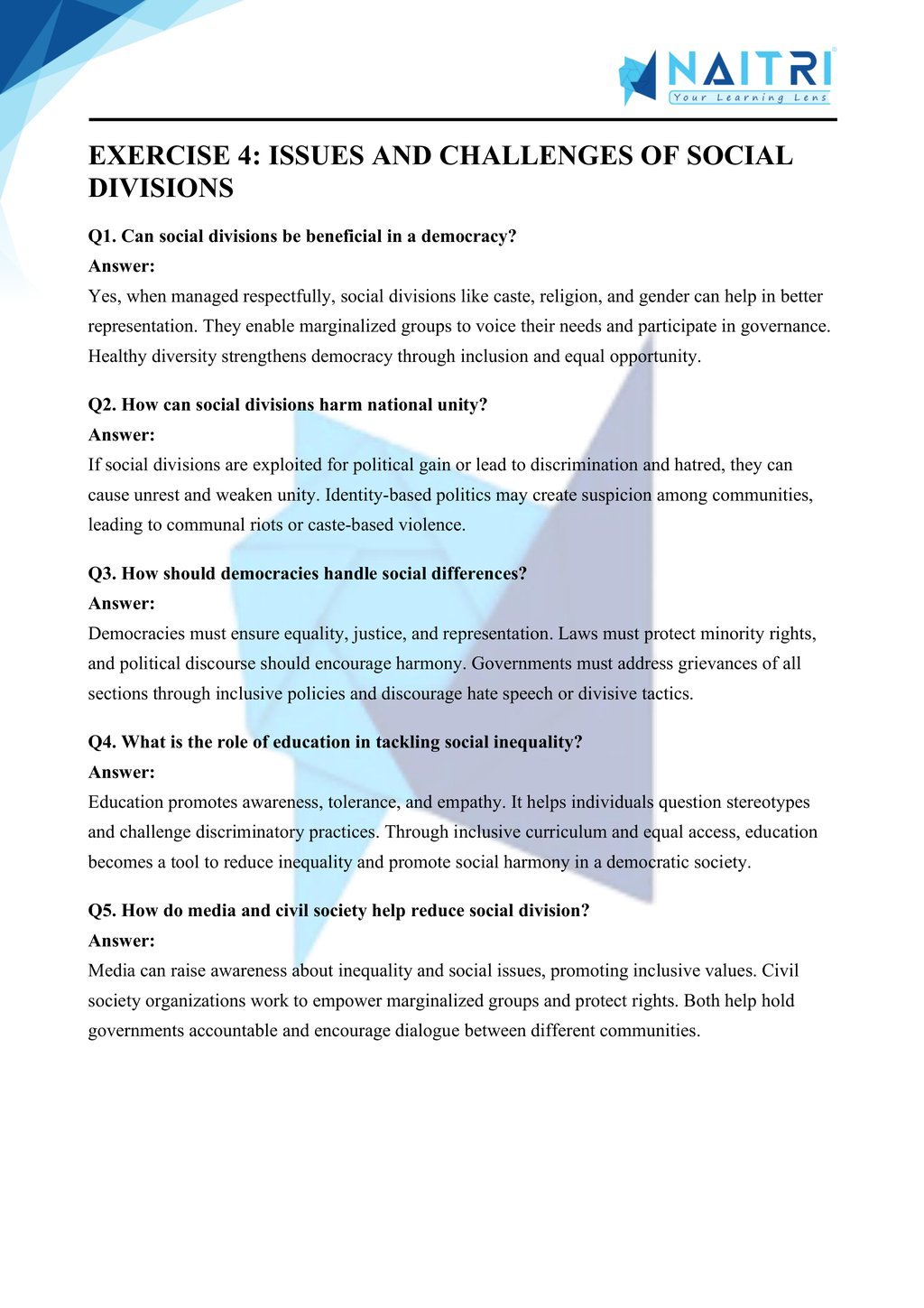
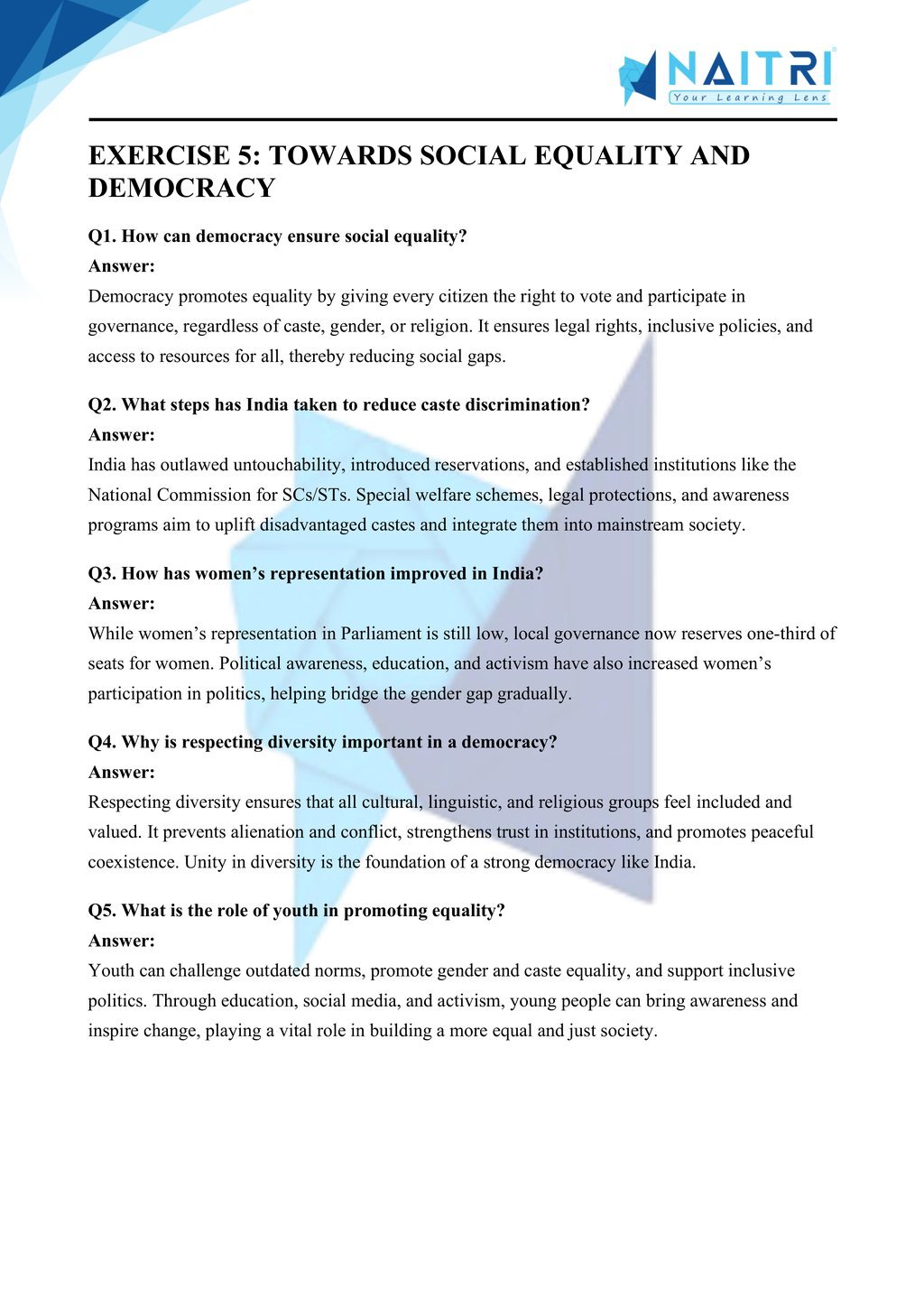
Experience Civics Like Never Before – With AR!
Understanding Gender, Religion and Caste is now more exciting and immersive! With the NAITRI App, you can explore complex civics concepts through Augmented Reality (AR). Watch social identities shape politics, discrimination challenged, and equality promoted — right in front of you. Our AR-powered lessons make learning interactive, 3D, and fun, helping you retain concepts better and enjoy every topic.



Visualize . Interact . Understand . The future of learning is here
Gender, Religion and Caste – Important Questions with Answers
What is gender division?
Answer: Gender division refers to social expectations and discrimination based on gender, where roles, responsibilities, and opportunities are unequally distributed between men and women.How does gender inequality manifest in India?
Answer: Gender inequality is seen through low literacy, unequal wages, fewer job opportunities, female foeticide, and limited participation in politics and public life.What steps has India taken to promote women’s political participation?
Answer: India has reserved one-third seats in Panchayats and Municipalities for women, encouraging grassroots political empowerment of women in decision-making roles.Why is the political representation of women low in India?
Answer: Due to patriarchal norms, lack of education, financial dependence, and social barriers, women remain underrepresented in legislative bodies at state and national levels.What is the role of feminist movements in society?
Answer: Feminist movements fight for equality, raise awareness, and challenge gender discrimination in education, employment, and politics through protests and policy advocacy.What is communalism?
Answer: Communalism is a belief that one’s religion is superior, leading to prejudice, tension, and sometimes violenceamong different religious communities.How does communalism threaten democracy?
Answer: It divides society, encourages intolerance, disrupts secularism, and may result in conflict, riots, and political misuse of religious sentiments for votes.How is religion used in politics in India?
Answer: Some parties use religion to mobilize voters, promote communal ideologies, and favor particular groups, violating the secular ethics of democracy.What are constitutional provisions for religious equality?
Answer: The Indian Constitution grants freedom of religion, prohibits discrimination based on religion, and declares India a secular state with equal respect to all religions.What does the term secularism mean in the Indian context?
Answer: Secularism in India means the state has no official religion. It treats all religions equally and ensures religious freedom to all citizens.How does the Constitution ensure religious freedom?
Answer: It allows individuals to profess, practice, and propagate their religion, and prohibits compulsory religious instruction or discrimination in public institutions.What is caste hierarchy?
Answer: Caste hierarchy is a social structure where castes are ranked based on purity and occupation, often leading to discrimination and unequal treatment.What has been the impact of caste on politics?
Answer: Caste affects voting behavior, party nominations, and coalition-building. While it gives voice to marginalized communities, it can also promote division.How has caste-based discrimination reduced over time?
Answer: Through education, affirmative action (like reservations), and social reforms, caste-based practices have declined but still persist in many rural and urban areas.What are caste-based reservations?
Answer: They are affirmative policies that reserve seats in education, jobs, and politics for Scheduled Castes, Scheduled Tribes, and OBCs to promote social equality.Can religion, caste, and gender be completely separated from politics?
Answer: No, but in a democracy, they must be handled with care, ensuring inclusion and avoiding exploitation for political gains or power.How does democracy help reduce inequality?
Answer: Democracy provides equal rights, ensures participation, and protects minority voices through constitutional provisions and legal safeguards.What is the difference between social division and social difference?
Answer: Social differences are natural, like language or religion. Social division arises when these differences lead to discrimination or conflict in society.How can gender be a basis of inequality?
Answer: Gender bias limits education, job access, and public roles for women. It assigns domestic roles and leads to unequal opportunities and treatment.What is gender sensitization?
Answer: It involves educating individuals about gender issues to eliminate stereotypes, promote respect, and encourage equality in behavior and attitudes.How can religious harmony be promoted in a diverse country like India?
Answer: By ensuring equal treatment, promoting secular values, celebrating diversity, and enforcing laws that punish communal violence and hate speech.What is vote bank politics?
Answer: It refers to political parties favoring specific communities or castes for votes, often compromising on national interest and fairness.Why is women’s education important for democracy?
Answer: Educated women are more likely to participate in politics, make informed decisions, and challenge inequalities, strengthening democratic values.How does intersectionality relate to gender, caste, and religion?
Answer: Intersectionality explains how multiple identities (like being a woman and from a lower caste) create complex layers of discrimination and disadvantage.What values must a democratic society promote to overcome these divisions?
Answer: Equality, justice, secularism, and mutual respect are crucial to ensure all groups feel represented and no one faces discrimination or exclusion.
Gender, Religion and Caste examines how social divisions influence politics in a democracy. It highlights issues like gender inequality, caste-based discrimination, and the misuse of religion in politics. The chapter promotes the idea of social justice and equality by showing how democratic institutions must protect the rights of all citizens. It also emphasizes that political expression of social differences can be constructive when based on democratic principles.
Related Chapters You May Like
Download Naitri App
Easy, Visual Learning — Right on Your Phone
Learn with Augmented Reality! The Naitri app makes CBSE and MP Board concepts interactive and fun — even in low-resource settings. Watch lessons, complete homework, take tests, and track progress — all in one place. Anytime. Anywhere.
Available on








